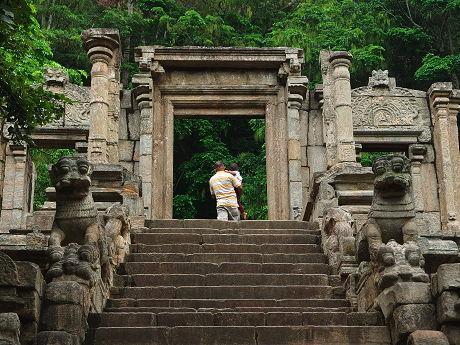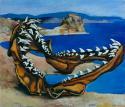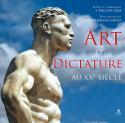Art Of The Day Weekly
#370 - from 8 January 2015 to 14 January 2015

The monumental staircase at Yapahuwa, Sri Lanka (Photo R. Pic)
IN THE AIR
Letter from Sri Lanka
The pearl of the Indian Ocean is known for its paradise like beaches, its elephants, and for its dreadful civil war which finally ended in May 2009 with the bloody defeat of the Tamil Tigers. As new presidential elections are just around the corner (8 January), the island hopes not to fall back into the throes of the past and to pursue its tourist expansion, which recently went past the threshold of 1 million tourists a year. It has a true growth potential for Sri Lanka is not limited to its natural assets. It has a cultural heritage that is ill-known abroad (except for the famous Buddha tooth at Kandy): the largest reservoirs and the biggest man-made brick stupa ever built, as well as century-old cities. These stone cities with sculpted capitals and immense lying Buddhas – Anuradhapura, Polonnaruwa, Yapahuwa, Sigiriya -, had all been forgotten, lost in the jungle until just a few decades ago. The fascination they exert is similar to that of the Mayas of Yucatán. But not their fame: they still need to be known.
EXHIBITIONS

Renato Guttuso, Shark’s Jawbones in a Landscape, 1974 Oil on canvas, 63 x 73 cm. Courtesy Galleria d’Arte Maggiore, Bologna
Guttuso, a paladin of realism
LONDON – His true large retrospective was actually held two years ago, to commemorate the centennial of his official birth (actually born on 26 December 1911, he was only declared to the authorities in January 1912), in Rome, his adopted city. Sicilian artist Renato Guttuso (1911-1987), the Italian interpreter of social realism illustrated in France by Fougeron, was a major figure in XX century Italian art. He experienced all styles, from portraits to still lives, with a preference for large paintings full of pathos, from his famous Crucifixion (that the Vatican hated) to the Flight from the Etna including the Vucciria, an exciting representation of the large market of Palermo. The public today calmly neglect Guttuso, a friend of Picasso’s and of Togliatti’s (whose impressive funeral he painted). This small London exhibition allows us to find some of his key themes and to make the link with his friend, English painter Peter de Francia (died in 2012 at the age of 90), who also dealt with social political subjects, such as the bombing of Sakiet, in Tunisia.
• Renato Guttuso, Painter of Modern Life, at the Estorick Collection, from 14 January to 4 April 2015.
The Shoah, filmed from Moscow
PARIS – We all know of course Nuit et brouillard by Alain Resnais. And we know that some of the greatest American directors, among them John Ford, Samuel Fuller and George Stevens, filmed the liberation of the Nazi death camps. What we know little of is the Soviet involvement in the matter. This exhibition helps us lift a part of the veil through numerous archives, among them the photos taken by Roman Karmen at Maidanek, the first camp discovered by the Red Army on 23 July 1944, or the rushes taken at Auschwitz as of 31 January 1945. These images are to be taken with a big grain of salt. They were taken under difficult conditions and were made for Soviet propaganda. So it was not rare that some were retouched, or re-staged (like at Auschwitz, with healthy female peasants playing the part of the prisoners, to magnify the saving role of the Red Army), while the Jewish character of the victims is often avoided. Aside from the moving and testy subject, this is a true thought on the power of images and their manipulation.
• Filmer la guerre : les Soviétiques et la Shoah at the Mémorial de la Shoah, from 9 January to 27 September 2015.

Pieter Hugo, Green Point Common, Cape Town, 2013. © Pieter Hugo, courtesy Galerie Stevenson, Cape Town/Johannesburg and Yossi Milo, New York
Hugo, lights and shadows
Born in South Africa in 1976, Pieter Hugo started photographing when he was a teenager, at the same time that apartheid was coming to an end. He was a white man in a black continent, an African without being one. He has walked away from the series that made him famous (Rwanda, the Albinos, the brotherhood of the hyena men of Ghana) and over the last eight years has looked into his own story, his family, his link with the soil. In the Kin series, he has mixed portraits, still lives, pictures of degraded urban areas, drawing up the state of a country which is half way in its development but which is far from having healed all its wounds and which is a rainbow nation only in its official rhetoric…
• Pieter Hugo at the Fondation Cartier-Bresson, from 14 January to 26 April 2015.
AS WELL AS...
12 months with Tino Sehgal
AMSTERDAM - At the cutting edge of contemporary conceptual art, Tino Sehgal (born in 1976), who actually studied to be a ballet dancer and an economist, will show the variety of his inspiration over a whole year. The great museum of contemporary art has invited him to take over a different room every month. January is under the sign of Dan Graham and Bruce Naumann.
• A year at the Stedelijk: Tino Sehgal at the Stedelijk Museum, from 1 January to 31 December 2015.
The street of Helen Levitt
ATLANTA - A photographer who lived a long life, Helen Levitt (1913-2009) documented six decades of New York life. From Harlem to the Lower East Side, she has left us an unreplacable testimony of the street show, biting into the every day life of the residents, from the conversations of the shop owners to children's games.
• Helen Levitt at the High Museum, from 10 January to 31 May 2015.
GRONINGEN - The electric guitar is one of the major signatures of XXth century music. A selection of instruments that belonged to famous musicians help open the show with a real melody.
• The myth of the electric guitar at the Groninger Museum, from 14 January to 8 March 2015.
BOOKS
Aesthetics of dictatorships
The train station in Milano, in the “Assyro-Milanese style” according to the word chosen by its critics) and the EUR district in Rome; the manly busts by Arno Breker and the muscled disc throwers shot by Leni Riefenstahl; the Moscow metro and Stalin walking around boastingly as “General Winter”; or on he walls of the Kremlin. All these images of XXth century art all have a point in common: they are the product of totalitarian regimes that exalt strength, promote a new man and condemn all dissidence to silence. The book lists for the three “iconic” countries - Italy, Germany and the USSR - the different artistic expressions. While architecture, sculpture and painting are rather well known, we discover with interest a part that was neglected but was surprisingly creative, graphics. To seduce the crowds on the heroism of their masters or the reliability of national industry, certain front row artists – Sironi, Depero, El Lissitzki – summarized in a very efficient manner the ideals of speed, strength and hardness for the Pirelli tires, the cruiser Patria, the railroad trains or the tireless steel workers.
• Art et dictature au XXe siècle, by Marie-Adriana Giusti and Philippe Sers, Place des Victoires, 2014, 256 p., €39.95
OPENINGS OF THE WEEK

Julien Berthier
8 January 2015 - PARIS - Galerie Georges-Philippe et Nathalie Vallois
A conceptual approach using other artists' sculptures and… pigeons


